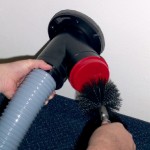FAQ
Frequently Asked Questions
What is the most significant clues to fungi contamination in the HVAC system?
To grow, fungi need a source of nutrients and moisture for more than 24 hours.
- Check for musty odors. If you remove the moisture, the fungal spores will be dormant, but they can grow if moisture is present.
- Look for discolorations-in general: green, black, white and/or pink.
- Check for slimy, turbid or sludgy standing water in the air handling unit.
How can we minimize air duct contamination?
Use a careful preventative maintenance program to reduce contamination.
- Use the highest efficiency air filters recommended by the manufacturer of your heating and cooling system.
- Change filters regularly; post a schedule for maintenance crews to observe. If they are clogged on inspection, filters may need more frequent changing. The filter holders must fit correctly so air cannot bypass the filters through gaps.
- Heating and cooling system maintenance must include cleaning cooling coils and drain pans.
- During building construction or renovation that produces dust, seal off supply and return registers. Do not operate the heating and cooling system until all dust is cleaned up.
- Operate humidifying systems strictly as recommended by their manufacturer.
 What's the best way to prevent biological contamination and mold growth?
What's the best way to prevent biological contamination and mold growth?
To prevent moisture (and mold contamination):
- Repair any leaks or water damage as soon as you find them.
- Make sure condensate pan drains properly.
- Check any insulation near cooling coils for wet spots.
- Make sure ducts are properly sealed and insulated in all non-air-conditioned spaces, such as crawl spaces.
How often should residential HVAC systems be cleaned.
Every two to three years is an average. Some of the things that may lead a home owner to consider more frequent cleaning include:
- Smokers in the household.
- Pets that shed high amounts of hair and dander.
- Water contamination or damage to the home or HVAC system.
- Residents with allergies or asthma who might benefit from a reduction in the amount of indoor air pollutants in the home's HVAC system.
- After home renovations.
- Prior to occupancy of a new home.
 What's the best way to prevent biological contamination and mold growth?
What's the best way to prevent biological contamination and mold growth?